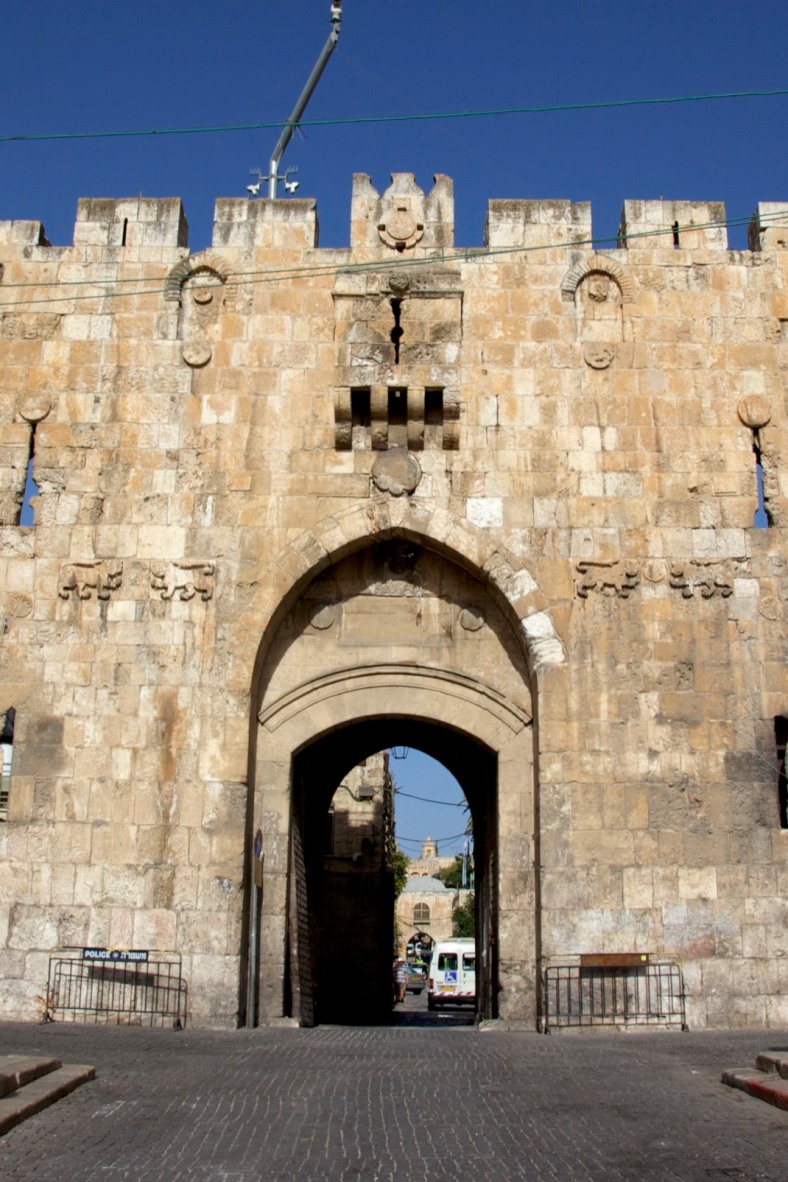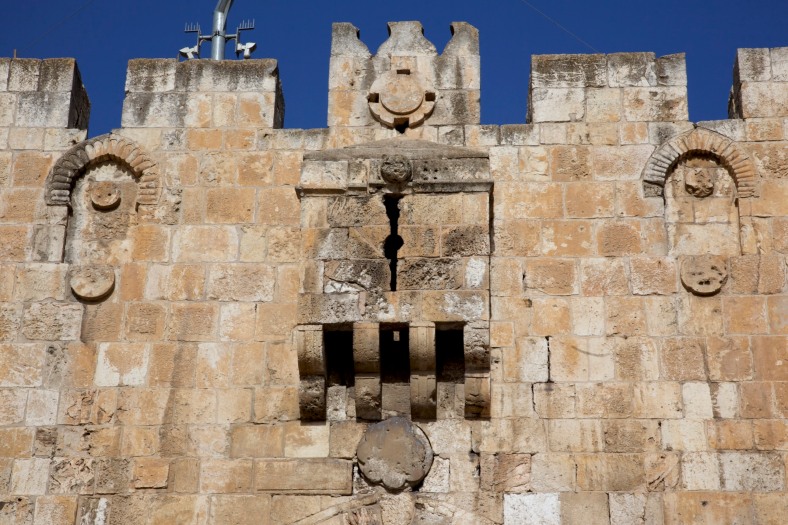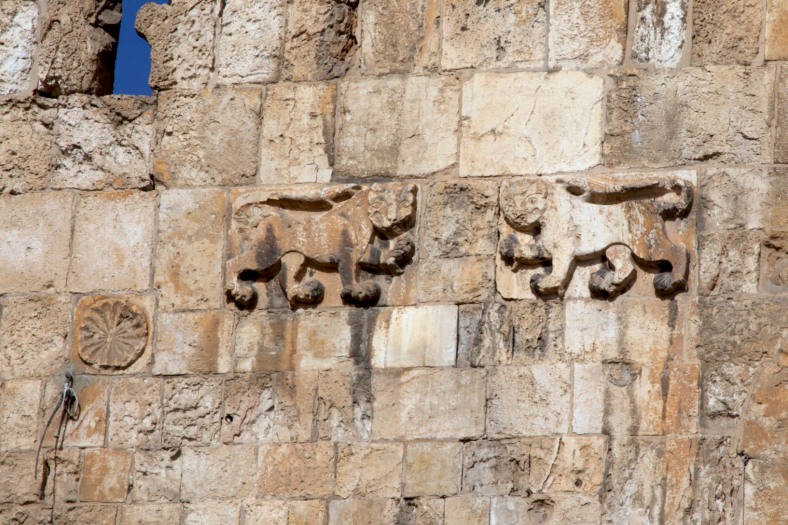In typical Jerusalem fashion, the Lion’s Gate has several different names. In Hebrew it is called שער האריות Shaʿar Ha-Arayôt = Gate of the Lions, referring to the heraldic lions (or leopards) flanking the gate. For Christians it is St. Stephen’s Gate, alluding to the tradition that Stephen was stoned outside this gate (Acts 7); the Greek Orthodox church commemorating his martyrdom is just down the street. In the time of Jesus it was the Sheep’s Gate because it was by the sheep market where the animals were bought for temple sacrifice. Arabs sometimes call it “Bāb Siṭṭ Maryam” (the “Gate of Lady Mary”) because the gate leads to the nearby tomb of Mary, where both Muslims and Christians venerate the mother of Jesus. It is also sometimes called (باب الأسباط = bāb al-asbāṭ) the “Gate of the Tribes [of Israel]” The current gate was built by Suleiman the Magnificent in the early sixteenth century in the course of his restoration and beautification of Jerusalem. The carved lions in the wall seem to be reused stones of the heraldic sign of the Mamluk Sultan Baybars of Egypt.
Overview of Lion’s Gate; The big silver pole coming out of the top of the gate is an Israeli observation camera to monitor Arabs coming into the city.
This photo shows the ornamented projecting machicolation over the gate; it allowed shooting arrows or muskets through the loophole, and dropping rocks, missiles or boiling water/oil on people attempt to breach the gate.
The famous “lions” of Lions’ Gate. They are sometimes said to be leopards or tigers, but their similarity to the heraldic lions of the famous counter-crusade Sultan Baybars (Baibars) of Egypt {r. 1260-1277}, makes it very likely they were reused stones built into the new gate.




Great information – funny when I was there I never noticed the camera!